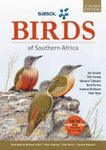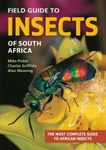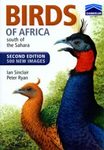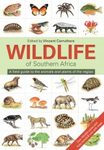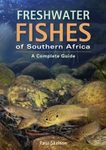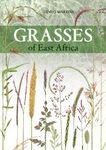Well researched introductions to key sites
By
Gehan de Silva Wijeyeratne
23 Jul 2019
Written for Paperback
I have been to East Africa a few times and accumulated a fair number of books on the region. I suppose I am therefore in a good position to assess whether yet another guide to East Africa’s parks is needed. This is a useful addition to both the first-time visitor and the repeat visitor who has an all-round knowledge of natural history and wants bite-sized information on highlights as well as something that provides context. In terms of context, I found the sections on geology and vegetation (which in turn influence the animal life) especially interesting. This type of information is a little too specialist for inclusion in travel itineraries which can be found in the general travel literature in print and online. The background information on natural history can at times also take a lot of effort to source as it is buried in scientific papers or in formal reports on conservation management. Chris and Mathilde Stuart who are the authors of several books in my collection have done the grunt work by sieving through the formal literature and putting it together in a simple and digestible manner. For example, although I am familiar with the Maasai Mara, it is good to be reminded that 556 species of birds and over a hundred species of mammals have been recorded. As someone who writes wildlife travel articles, I liked the conspicuous trees and other key vegetative features being flagged.
The book covers 58 sites in four countries: Tanzania (21), Kenya (24), Uganda (10) and Rwanda (3). The book has two parts; the first part being the site guide and the second being an identification guide to the commoner mammals, birds, reptiles, amphibians and trees. The type of visitor who buys this book is likely to be someone who will have one or more wildlife field guide books with them when in the field, therefore I am a little doubtful of the added value of the identification guide. However, as it does not add a lot to the weight of the book being a fairly slim section (pages 209-246) I can see that it may be convenient to have this section when someone is reading the book back in camp.
The obvious value of this book is in the trip planning stages. However, anyone very keen on natural history and interested in having context for a wildlife reserve would find this compact book useful to take with them. On my visits, I have taken with me books of a similar genre but this is the best I have seen so far.
Each country section begins with a country overviews, one or more maps and the highlights. The sites sections have standard categories covering Lie of the Land, Brief history, Geology and landscape, Climate, Vegetation and Wildlife. The wildlife section has subsections for mammals, birds, reptiles and amphibians. Species and places mentioned in the text are bold-faced. There are also various text boxes for Highlights, Facilities and Activities, Wildlife Facts plus travel tips flagged by an exclamation mark. There is also a site map, although this is often to a size and detail only sufficient to provide an overview. Each site has one or more images of landscapes intended to convey a sense of the place. These are especially useful for sites that a reader is not familiar with. The text is written in an accessible style and no different to what one would encounter in a travel guide or brochure. However, a very impressive amount of information is packed into it, without it feeling busy or crowded thanks to good design and layout allowing enough white space to leave the pages aesthetically pleasing. To manage expectations, if a site is not good for big game viewing, for example, the site descriptions clearly state this.
The combination of pictures, maps and information which has depth, but is not overwhelming, makes it pleasurable to thumb through. It does the job for the National Tourist Organizations of these countries and it would be so easy for them to commission their country sections to be hived off as separate books to be distributed for free at international consumer events such as the British Bird Fair held in Rutland and Destinations held in London. I suspect the NTOs in these countries do not fully grasp the work done for them in marketing Africa by Struik together with their authors and sales and distribution network. I comment on this aspect because in the past I worked in wildlife tourism and am more cognizant to the role played by publishers in developing wildlife tourism.
Repeat visitors like me are likely to have their interest piqued by the information provided to sites not already visited by them. For example, Udzungwa Mountains National Park caught my attention because the image showed a wide trail through a rainforest. I read that it is one of the best birding destinations in Tanzania with 400 species across the massif, 120 species of mammals and 539 species of butterflies. Two of the endemic primates have habituated populations, a bonus for a keen photographer like me. I also love mountains. A site which will be on my list on my next trip to Tanzania, although the text has provided practical information warning me that the trails can be slippery and dangerous during the wet season (which I will avoid) and visitors need to be accompanied on the trail by guides. A guide will be handy as the text also warns me that Elephant, Buffalo and Lion are present. Although practical advice is offered such as I have provided as an example above, this is not a ‘how to get there and where to stay’ type of guide book. The book focusses on educating people on why you should go there and what one can expect to see. Logistics information on getting there and accommodation can change rapidly and is best looked for in other forums such as trip reports and websites where travellers exchange information. If you are limited for time and can afford to have a trip arranged for you by a specialist company, this may well be the best way to arrange trips for some of the less-visited sites with limited infrastructure.
This book is one in a long tradition of ‘where to watch wildlife’ guides. But moves away from tedious lists of species recorded, into a style of writing and aesthetically appealing design which will appeal to a wider range of travellers and not just those who are serious wildlife enthusiasts. It will also be a very useful resource to people in the travel industry all over the world who sell Africa. They will find well-researched information in a handy digestible format.
3 of 3 found this helpful
-
Was this helpful to you? Yes No



























